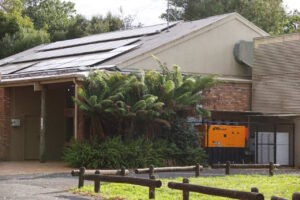Global solar PV additions in 2019 are set to drive greater double-digit renewable power capacity growth, according to the International Energy Agency, with almost 115 GW of new solar capacity set to push new renewable additions in 2019 close to 200 GW.
After what was, according to most analyst figures and reports, a lacklustre 2018 for renewable energy capacity additions, the International Energy Agency (IEA) expects 2019 to bounce back with power capacity additions growing by almost 12% – the fastest pace since 2015.
More importantly, 2018 was the first time since 2001 that growth in renewable power capacity failed to accelerate year-over-year.
Leading the charge will be the global solar industry which suffered a messy public decline in 2018 due primarily to government mismanagement of China’s solar policy, which resulted in national and international headaches. However, the IEA expects the global solar industry to increase by over 17% in 2019 – despite a slight decline in China.

Specifically, the IEA estimates that global solar PV capacity additions in 2019 will increase to almost 115 GW – the first year to break the 100 GW barrier (though this conflicts with various analysts which claimed 2018 broke the 100 GW barrier regardless of China’s slump) and the third year in a row in which solar will account for over half of global renewable power additions.
China’s solar policy support was not solidified until the middle of the year, which resulted in a slow start to 2019 which, in turn, will likely see China’s solar capacity additions slip again.
However, the IEA expects China’s slump to be offset by faster expansion in the European Union – led by Spain; new installations skyrocketing in Vietnam as developers seek to claim expiring incentives; faster growth in India and the United States; and expedited commissioning of projects in Japan.
“These latest numbers give us many reasons to celebrate: Renewable electricity additions are now growing at their fastest pace in four years after a disappointing 2018,” said Dr Fatih Birol, the IEA’s Executive Director. “We are witnessing a drastic decline in the cost of solar power together with strong growth in onshore wind. And offshore wind is showing encouraging signs.”
“These technologies are the mainstays of the world’s efforts to tackle climate change, reduce air pollution and provide energy access to all. The stark difference between this year’s trend and last year’s demonstrates the critical ability of government policies to change the trajectory we are on.”
Solar won’t be the only renewable energy technology to bounce back after a lazy 2018, with onshore wind expected to increase by 15% to 53 GW in 2019 – the largest increase for the technology since 2015’s record deployment.

Onshore wind development will be bolstered by accelerated deployment in the United States as developers seek to qualify for federal production tax credits before they are phased out, while in China, lower curtailment levels have unlocked additional growth in several provinces this year, allowing for faster expansion of the country’s onshore wind industry.
The global offshore wind industry, however, will remain relatively stable in 2019, with approximately 5 GW of new capacity to be built by year’s end, led by the European Union and China.










